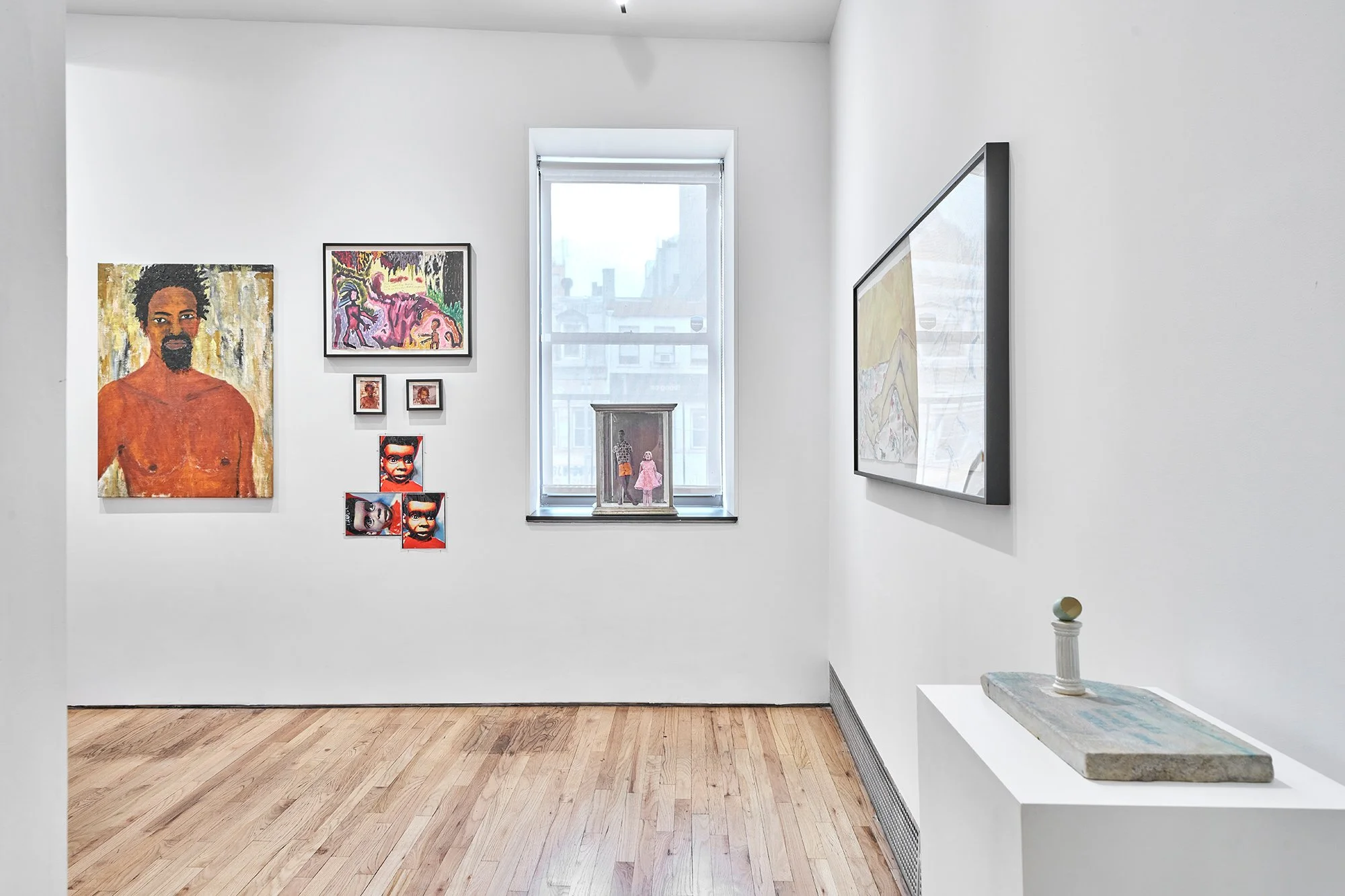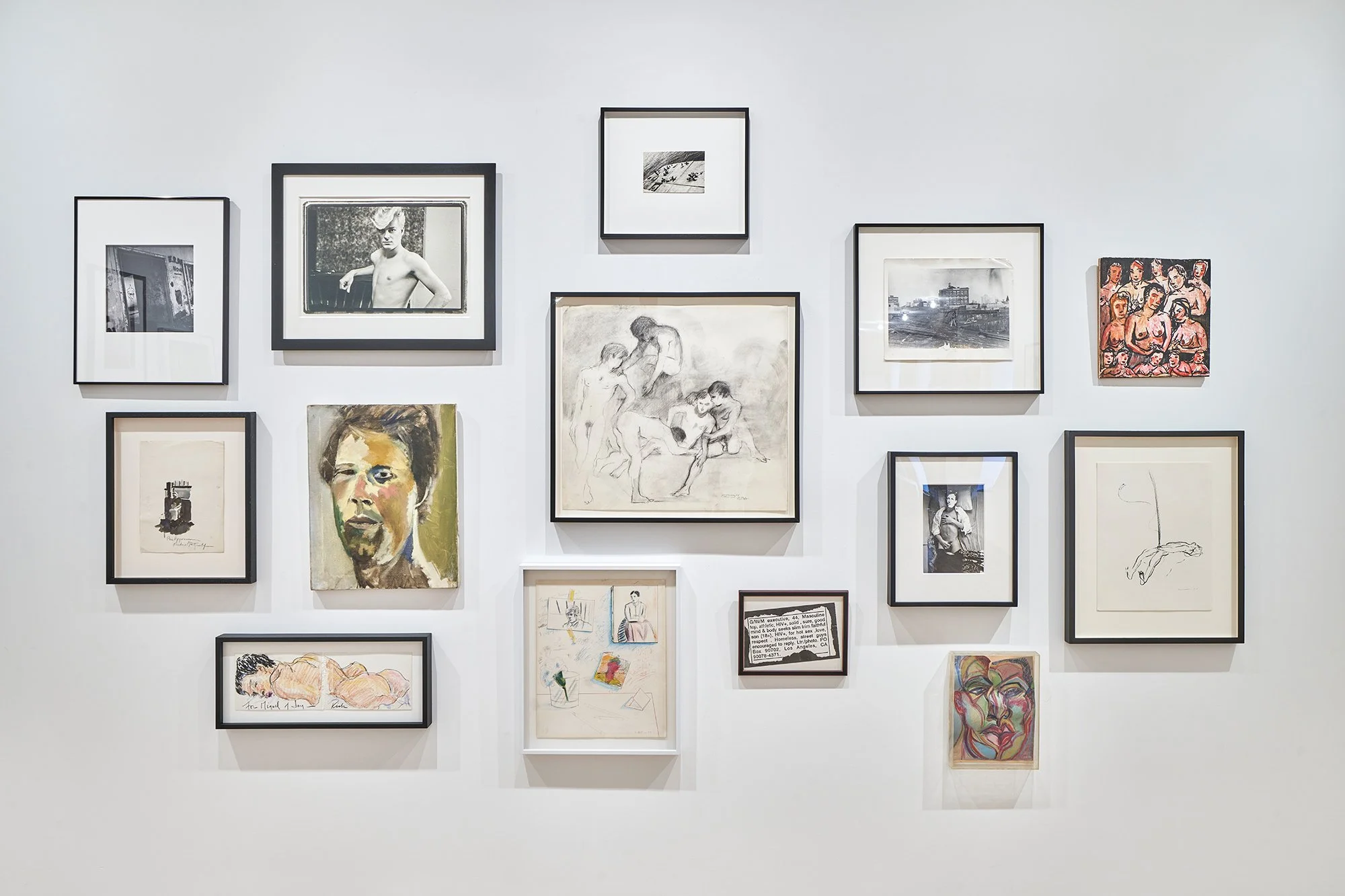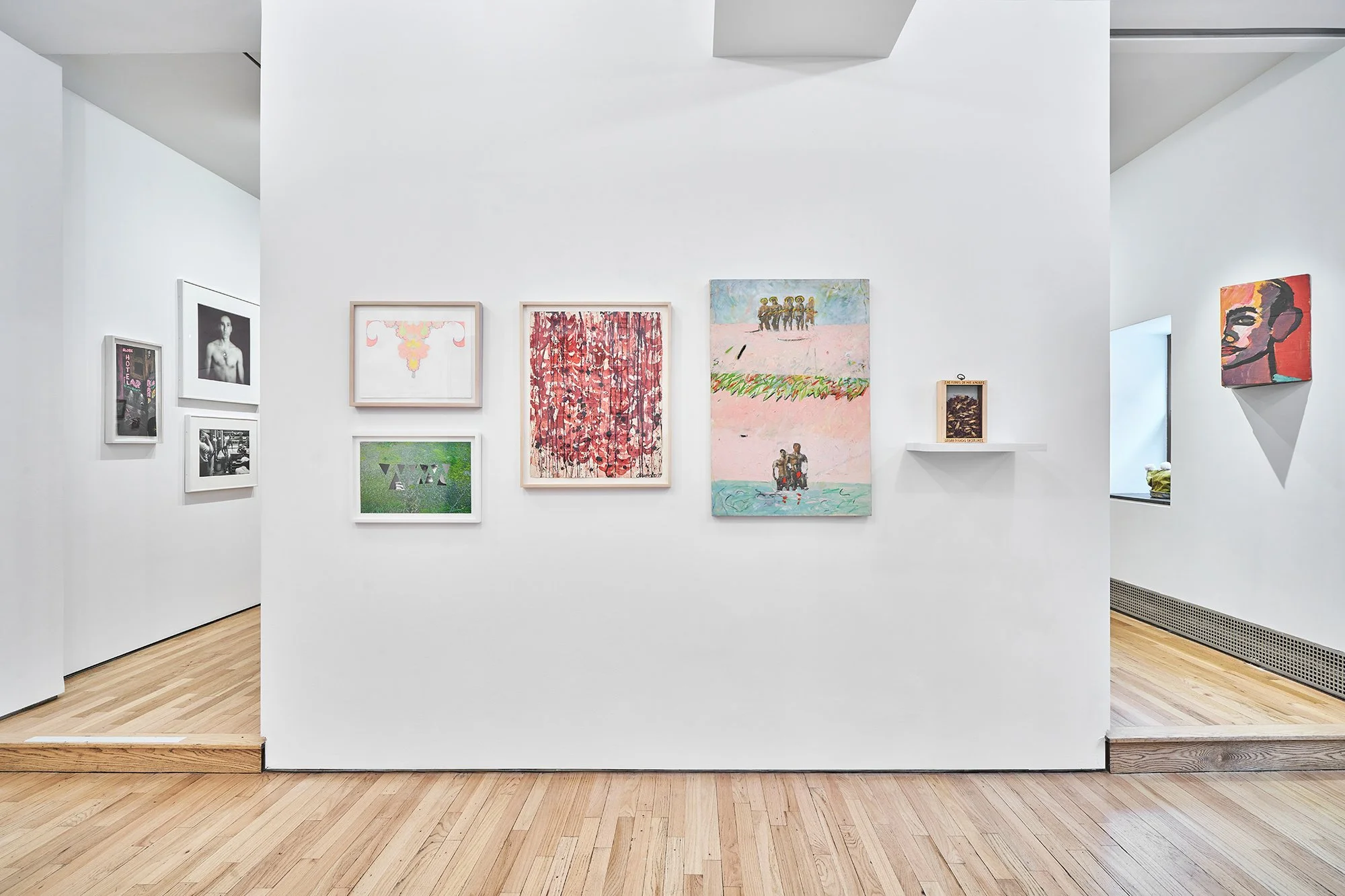Luxe, Calme, Volupté
Luxe, Calme, VoluptÉ
June 21 – August 11, 2023
1 Rivington Street, New York
To coincide with the retrospective Darrel Ellis: Regeneration at the Bronx Museum, CANDICE MADEY presents Luxe, Calme, Volupté, an exhibition curated by Antonio Sergio Bessa and Allen Frame that surveys over 70 artists working in New York in the 1980s, the decade when Ellis developed his radical approach to photography, depicting intimate portraits of friends, family, and of himself.
After Darrel Ellis entered the High School for Fashion Industries around 1973, he would soon become connected to a coterie of artists his age who had moved to Lower Manhattan in search of opportunities to create art. His best friend at school was Miguel Ferrando, a Lower East Side youth whose family immigrated from the Dominican Republic. Drawn to the fine arts, Ellis and Ferrando were frequent visitors to the Metropolitan Museum where they refined their draftsmanship studiously copying from the old masters. Perhaps that affinity brought them to connect with Richard Brintzenhofe, who had moved from Virginia with his brother David. Another friend, John Ahearn, born in Binghamton, New York, moved to Manhattan in the mid-1970s with his twin brother filmmaker Charlie Ahearn. Jane Dickson, married to Charlie, was born in Chicago, and together they participated in the creation of COLAB, the artists’ collective that promoted guerrilla-style exhibitions around town.
Ellis shared his first studio space, at PS1, with James Wentzy, who had moved from South Dakota to work in the New York film industry. They came from everywhere as if responding to the invitation issued in 1857 by the French poet Charles Baudelaire: “My child, my sister / Think of the rapture / Of living together there!”. That those young artists gathered in Lower Manhattan at a time of great financial stress, with its crumbling infrastructure, seems at odds with the promise of a utopian place: “There all is order and beauty / Luxury, peace, and pleasure.”
But the distress in the city brought cheaper housing and studios and more opportunities. Finding a community of artists was, for many, a new and exhilarating experience. Some of the artists in the exhibition were closely connected with Darrel Ellis, and others were more tangentially related but shared an overlapping context. Ellis was in many scenes at once, as were many of the artists in this exhibition, navigating the maze of the broader New York art world. The interrelationships among them underline an important thread of the show—the value of personal ties within a creative community dedicated to artmaking outside the commercial arena. For instance, The Bar was an important place for many, an East Village gay bar where downtown artists gathered and met, as pivotal as any art venue at the time. Alvin Baltrop, celebrated only posthumously, was a bouncer, and Bill Rice and Dieter Hall, painters who eschewed the art hustle, were regulars. Frank Franca, Agosto Machado, Edward Brezinski, Peter Hujar, and Paul Thek all lived nearby. The Bar was half a block from where Darrel Ellis was living with the actor José Rafael Arango in 1981.
Fashion Moda in the Bronx, on the other hand, brought Ellis together with its founders Joe Lewis and Stefan Eins; Susan Spencer Crowe, who worked there; and John Ahearn and Wendell Headley, who lived in the Bronx. The euphoria from being in a relevant mix of artists in this time was shattered by the onset of AIDS, and some of these artists became activists. The exhibition emphasizes the sensual, gritty, and sometimes opulent work they were making before and throughout that tragic disruption, (without including examples of activist pieces from the period that have been widely shown elsewhere). A dream, of liberation and equality, encouraged by the 60s and 70s cultural revolutions, was disrupted by the AIDS pandemic, in a horrific fin de siècle that came a decade early. By the time Darrel Ellis died in 1992, the same year as David Wojnarowicz, 10 of the artists in this exhibition had also died of AIDS-related causes, and others succumbed later in the 90s.
The salon-style hanging of 70-plus artists in the show creates the kind of dense mix of surprising juxtapositions and unexpected bedfellows that occurred constantly in the lives of these artists and is weighted towards the portrait and the figure, reminders of the interrelated subjectivities that merged in a scene with so much promise and so much destruction.
Presenting works by John Ahearn, Jules Allen, Mariette Pathy Allen, Barbara Alper, Alvin Baltrop, Stephen Barker, Sheyla Baykal, Edward Brezinski, Richard Brintzenhofe, Pam Butler, Luis Carle, Bill Costa, Stephanie Crawford, Susan Spencer Crowe, Jimmy DeSana, Jane Dickson, Philip-Lorca Dicorcia, Julius Eastman, Stefan Eins, Nicole Eisenman, Chris Ellis, Darrel Ellis, Miguel Ferrando, Robert Flynt, Allen Frame, Frank Franca, Luis Frangella, Judy Glantzman, Felicia M. Gordon, Arlene Gottfried, Tim Greathouse, Dieter Hall, Janet Olivia Henry, Don Herron, Peter Hujar, Bethany Jacobson, Lenny Kisko, Thomas Lanigan-Schmidt, Greer Lankton, Cary Leibowitz, Joe Lewis, Siobhan Liddell, Antonio Lopez, Agosto Machado, Dona Ann McAdams, David McDermott and Peter McGough, Liora Mondlak, Peter Moore, Mark Morrisroe, Nicolas Moufarrege, Gustavo Ojeda, Bill Rice, Adam Rolston, James Romberger, Richard Rule, René Santos, Gary Schneider, Clarissa Sligh, Larry Stanton, Lauren Stringer, Lily van der Stocker, Tabboo!, Gail Thacker, Paul Thek, Ken Tisa, Tseng Kwong Chi, Marguerite Van Cook, Brian Vincent, Magda Vitale, Robert Vitale, James Wentzy, Frederick Weston, Sue Williams, David Wojnarowicz, Martin Wong, and Jimmy Wright.
—


























